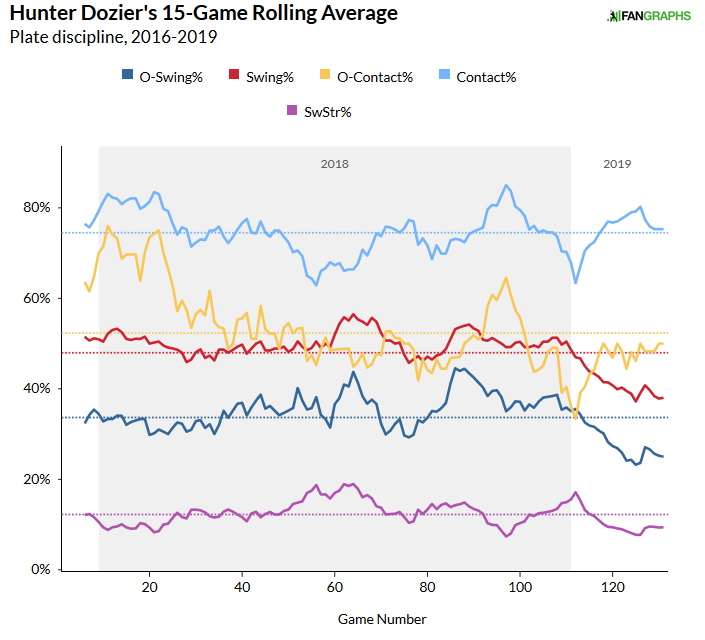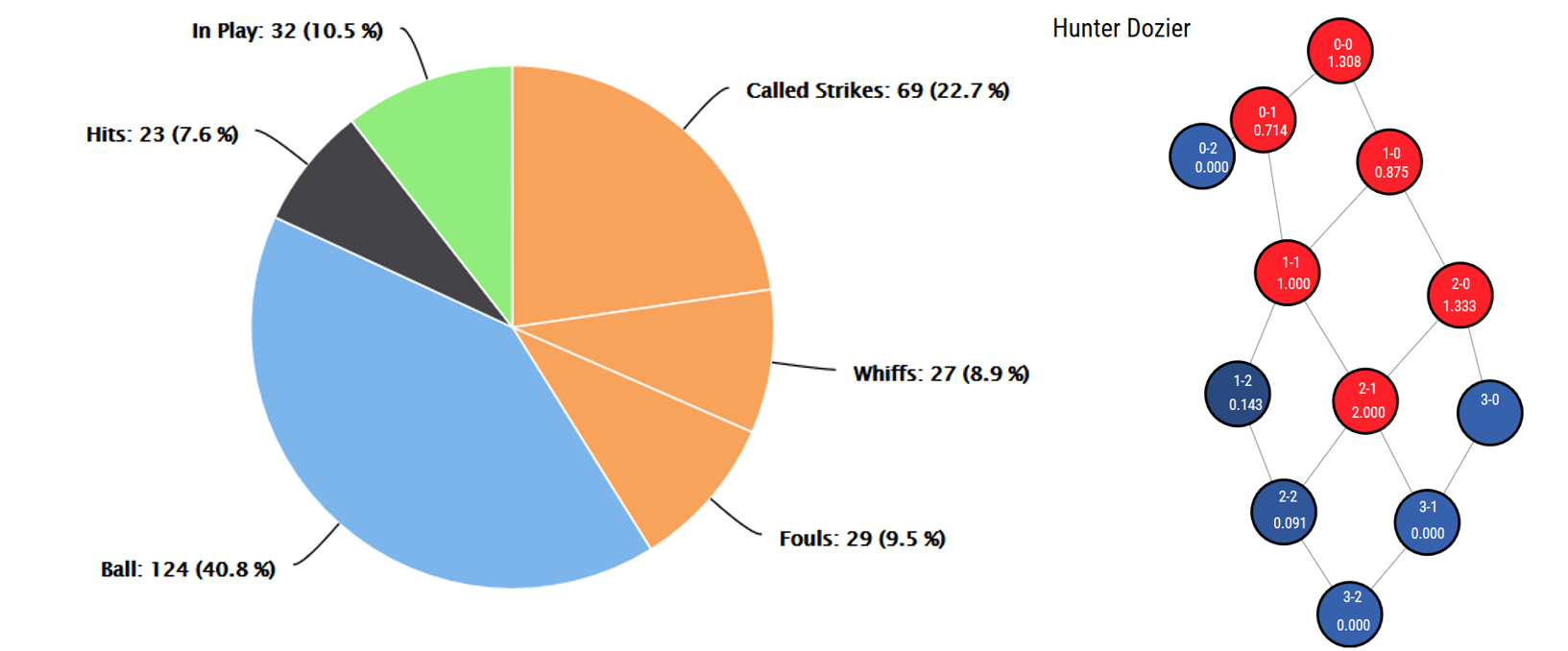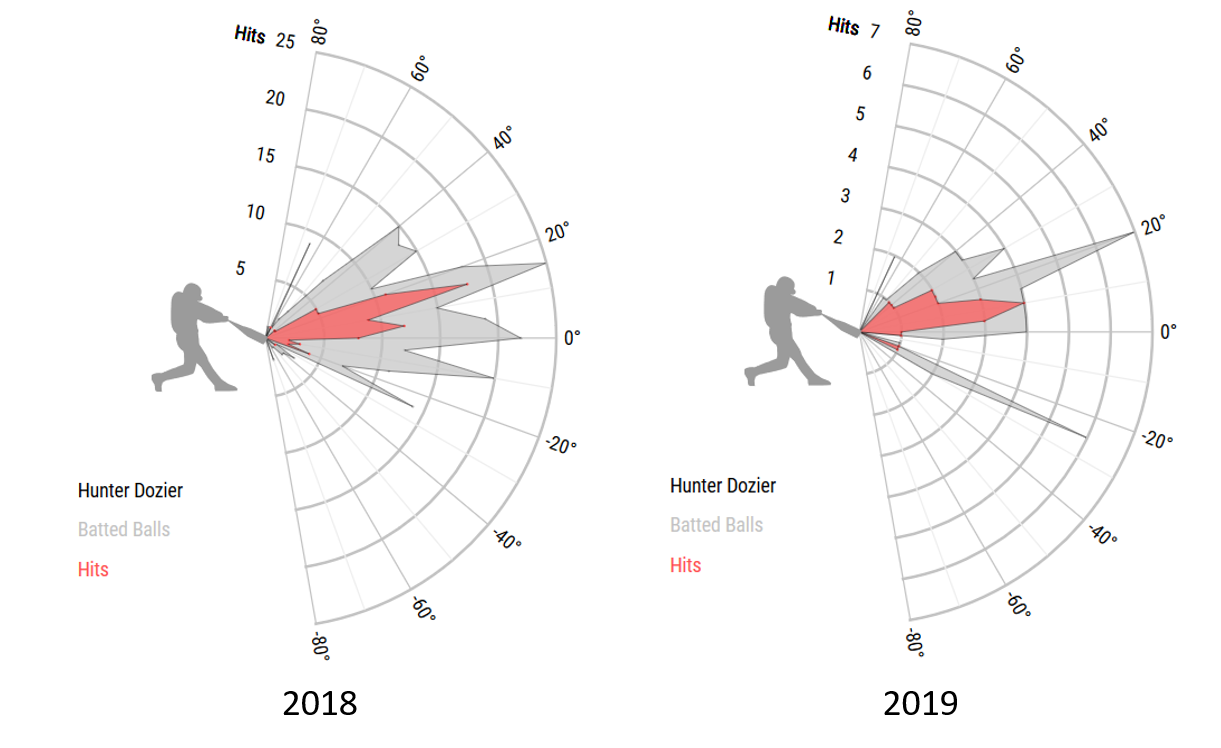In the wild, the fiercest predators act on instinct. The grizzly bear doesn’t consider its stance or arm angle as it’s mauling some unfortunate caribou. The gray wolf doesn’t look at a herd of sheep and analyze the probabilities of successfully attacking each one, only rushing the group once it’s selected exactly the right target. Save the overthinking for the Attenboroughs of the world. The wild’s greatest assassins rely only on the pure muscle memory and intuition gained from a tenacious pedigree and years of natural selection.
The analog to the athletics world is clear here, so I’ll stop belaboring the point. Mike Trout just sees a good pitch and swings; he saves the swing tweaking for batting practice. The version of Tiger Woods that wins the Masters is not the same version of Tiger that says “I’m close to figuring it out” after every disappointing round. Joey Votto doesn’t step in the batters box and think, “Arms in, slight leg kick, pull this changeup over the first base line” — actually check that, Joey Votto probably does do that.
Until just recently in his long professional career, Kansas City third baseman Hunter Dozier had been the overthinking would-be killer. The former eighth overall pick hasn’t lacked for pedigree, but his career trajectory has been less than prodigious up to this point. Prior to 2019, he owned a career OPS south of .700 across 400 plate appearances. In his own words, Dozier has constantly tinkered with his swing — noting in 2016 that the mental aspects of his swing mechanics had stunted his performance to that point, and noting the exact same thing two years later. But in 2019, Dozier seems like a different hitter.
| Year | AVG | ISO | OBP | BB% | K% | wRC+ |
| 2018 | .229 | .166 | .278 | 6.2% | 28.1% | 80 |
| 2019 | .324 | .352 | .430 | 15.1% | 19.8% | 186 |
So what’s changed with Dozier? He’s not overthinking anymore. He’s finally drilled his approach in the batter’s box down to a subconscious level: “See ball. Hit ball.” It’s why he’s primed for a potential breakout season at 27 years old. But just because Dozier isn’t overthinking his approach doesn’t mean we can’t.
The Stalker
While Dozier’s box scores have been impressive this season, his new approach is best reflected in some improved plate discipline. He looks like a different hitter altogether. Let’s start with his pedestrian 2018:
| 2018 | O-Swing % | O-Contact % | Z-Swing % | Z-Contact % | Contact % | SwStrk % |
| Dozier | 35.6% | 52.1% | 68.9% | 88.7% | 74.9% | 13% |
| MLB Average | 30.9% | 62.8% | 67.3% | 85.5% | 76.1% | 10.7% |
Seems all that dabbling led to some pretty ugly 2018 numbers. As you can see above, Dozier was about league average on swings and contacts on pitches inside the zone; it was his struggles against pitches outside of the zone that led to that ugly 28% strikeout rate and 0.22 strikeout-to-walk ratio. Rarely in baseball can you eyeball a light-switch moment where things start clicking for a player, but Dozier’s plate discipline improvements at the start of 2019 are staggering:
He’s gone from a below league-average hitter to an above average hitter seemingly overnight, making vast improvements in O-Swing % (-11.8%), Contact % (+4.2) and swinging strike rate (-4.6%) while swinging at fewer pitches overall. Since swing rates are among the fastest metrics to stabilize for batters, it’s not a stretch to say Dozier is a completely different hitter. His current walk rate of 15.1% is among the league’s top 25 batters, sandwiched between OBP-league stalwarts Michael Conforto and Anthony Rizzo. This plate patience isn’t just resulting in fewer strikeouts and extra walks, it’s what’s driving his ability to hit for average and power. Below is a breakdown of his actions on pitches this season, with the right side of the image showing his slugging percentage by pitch count.
When Dozier keeps himself from getting behind in the count, it leads to good results. The better news here is that he’s taking more balls than all types of strikes put together, and he’s putting the ball into play more often than he’s whiffing or fouling the ball. And his improvements aren’t limited to just a certain pitch type either. He’s currently slugging .732 against fastballs versus .667 against breaking balls, and he’s swinging at fewer pitches all the way across the board.
| Year-Pitch Type | Pitch % | xWOBA | Swing % | Whiff% | EV |
| 2018-Fastballs | 59.4 | .347 | 50% | 20.4% | 91.3 |
| 2019-Fastballs | 59.1 | .453 | 35.8% | 10.9% | 95.2 |
| 2018-Breaking | 32.6 | .233 | 48.9% | 44.4% | 88.5 |
| 2019-Breaking | 33.7 | .452 | 38.2% | 50% | 92.5 |
| 2018-Offspeed | 8.0 | .395 | 55.7% | 25.0% | 82.8 |
| 2019-Offspeed | 7.3 | .226 | 31.8% | 0.0% | 87.4 |
At this point, the biggest concern is whether his performance against breaking balls will stick as pitchers begin to adjust to his less aggressive approach. Still, there’s some exciting trends in the above chart, not the least of which is his improved exit velocity across the board.
The Mauler
The plate discipline improvements are what’s putting Dozier in the position to do good things, but it’s his improved quality of contact that’s doing damage to baseballs. In 2018, Dozier had a respectable but not elite 89.5 average exit velocity, split between a 93.7 EV on line drives and fly balls and just an 86 EV on grounders. Neither of those numbers is overly impressive, but the soft contact on grounders was the real killer: He hit a lot more ground balls than fly balls last year, leading to some easy outs and just a .200 average on grounders (to be fair, he didn’t exactly crush fly balls last season either). Hunter Dozier 2019, killer edition, is hitting the ball a lot higher a lot harder than before, averaging a 93.8 exit velocity that ranks among the top 5% of the league and raising his average launch angle by 4 degrees to 17.
Notice on the above graph the frequency of batted balls with a negative launch angle compared with the same frequency on the right: Dozier’s hitting fewer balls at suboptimal launch angles and more at launch angles with better outcomes. This bares out in his batted ball profile as well, as his ground ball to fly ball ratio has dropped from 1.13 last season to 0.63 this year. This means more fly balls, more line drives and a greater opportunity for home runs and other extra base hits.
His outcomes on batted balls have improved across the board, driven mostly by that exit velocity improvement.
| Batted Ball Type | % | AVG | SLG | EV |
| Ground Balls | 30.9% | .294 | .353 | 91.7 |
| Line Drives | 20% | .346 | 1.154 | 97.3 |
| Fly Balls | 49.1% | .818 | 1.091 | 95.5 |
His excellent exit velocities on FB/LD support his career-high 26% home run to fly ball rate, and his increase in fly balls points to 25+ home run potential on the season.
The Outlook
Amazingly, Dozier is still available in more than half of ESPN and Yahoo leagues. He’s currently day-to-day with back spasms, but isn’t expected to be placed on the injured list. With his excellent performance to start the season, he’s been batting cleanup in the Kansas City lineup behind Whit Merrifield and Adalberto Mondesi, so the RBI opportunities should be plentiful. He should be added in all league types, especially in OBP leagues. The jury’s still out on whether he’ll continue to produce against lefties as well, with an early OPS split of 1.231 against righties versus .768 against lefties. That curbs his ceiling somewhat until we’ve got a better read. Still, there’s plenty of upside here for an 80/25/80 season from Dozier, with the potential for 30 home runs there for the taking.
Don’t overthink it. Just attack.
Photo by Keith Gillett/Icon Sportswire




Would you rather Dozier or Miguel Andújar RoS?
I always like to defer to one or two-year track records over one month track records, so it’s still gotta be Andujar. If Dozier produces 90% of what Andujar produced last year that’s a profit.
I read somewhere else that Dozier is bound to regress due to possible shifts in the field. Do you agree with that? With regards to point production, is Dozier better than Renato Nunez?
Not sure where that’s coming from – he’s only getting shifted 25% of the time, which is 128th in the league. His wOBA against the shift is above .600. Basically, he’s facing fewer shifts and has better outcomes against them than guys like Alex Bregman, Michael Conforto, Anthony Rizzo, etal.
Regarding Nunez vs Dozier: I give the nod to Dozier in points thanks to the walks and modestly better lineup around him.
Yeah doesn’t seem to make sense. thanks for answering!